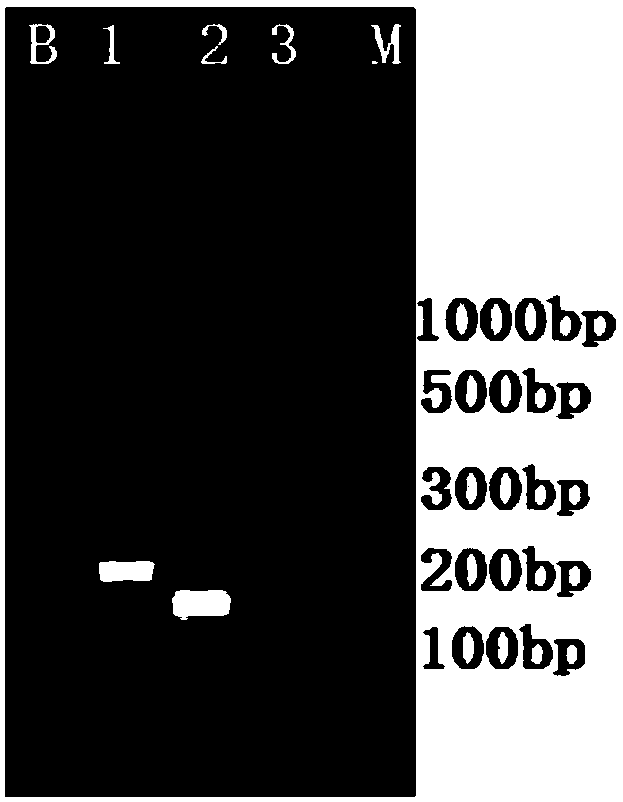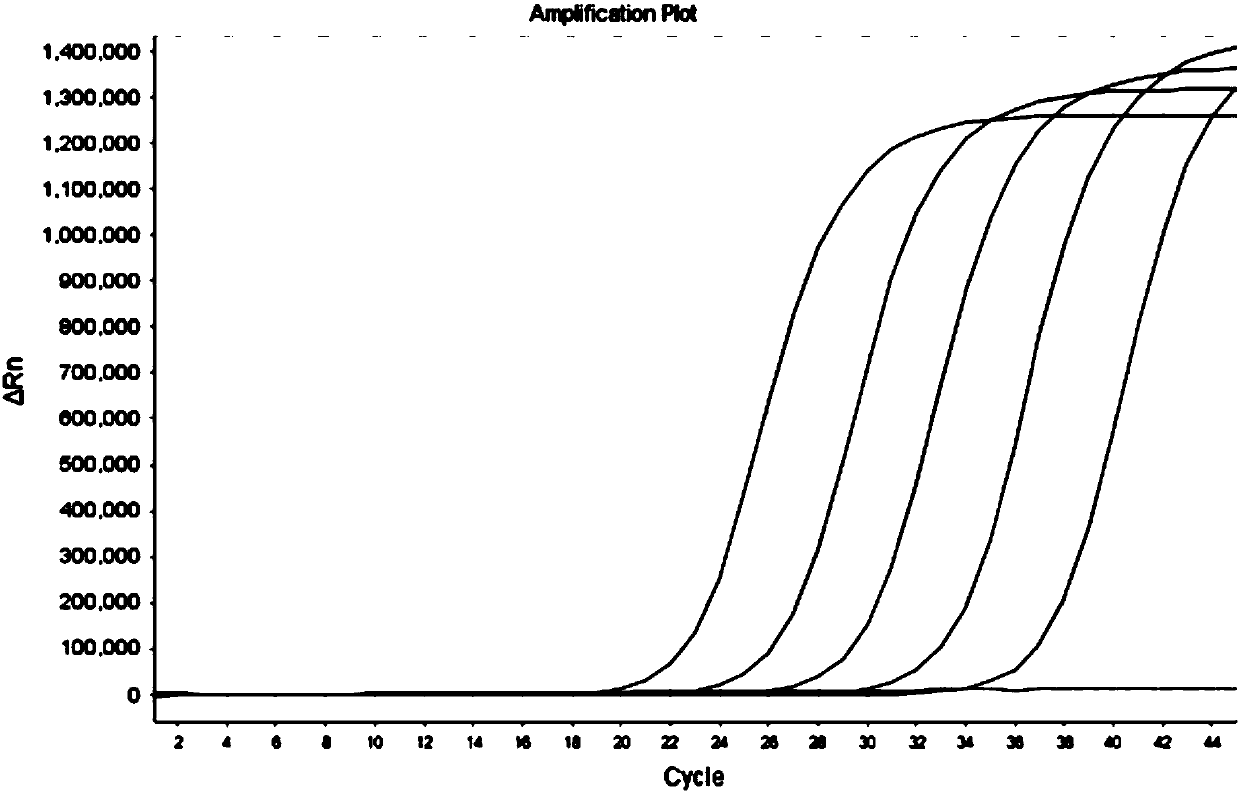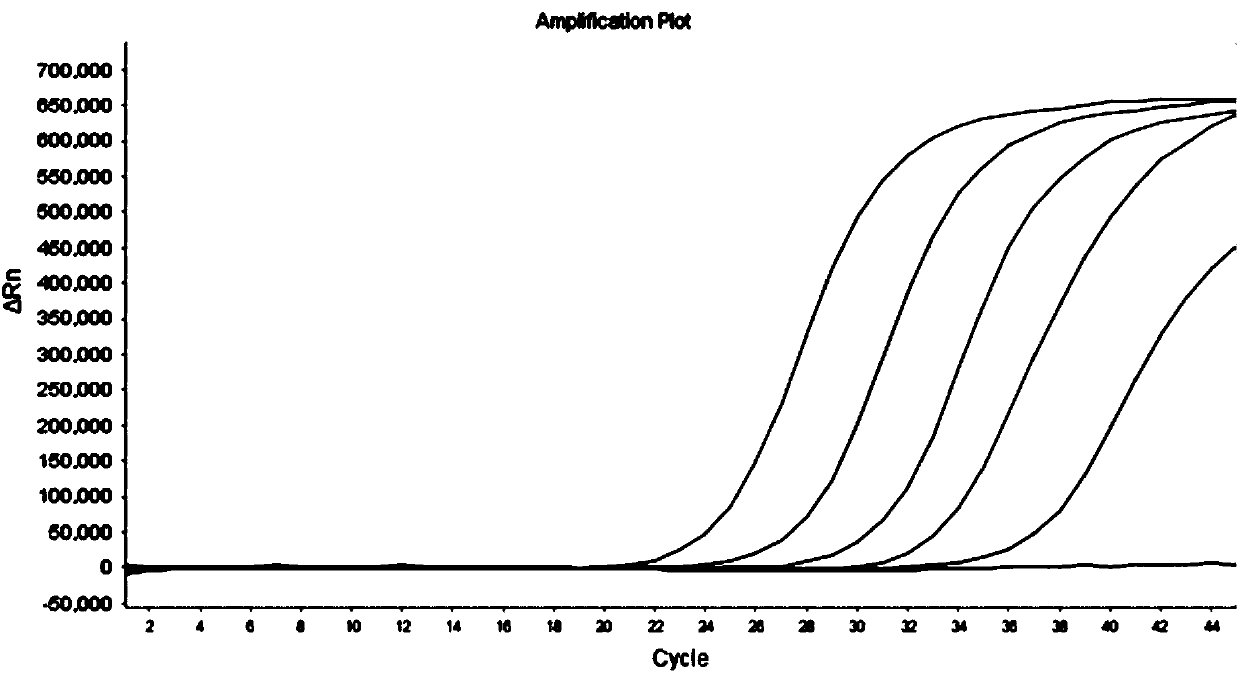Nucleic acid, kit and method for simultaneous detection of yellow phytoplasma, canker pathogenic bacteria and leaf spot pathogenic bacteria
A technology for pathogenic bacteria and yellowing disease, applied in biochemical equipment and methods, microbial determination/inspection, DNA/RNA fragments, etc., can solve problems such as compound infection, farmer loss, invasion, etc. Good effect and easy operation
- Summary
- Abstract
- Description
- Claims
- Application Information
AI Technical Summary
Problems solved by technology
Method used
Image
Examples
Embodiment 1
[0050] The design of embodiment 1 primer, probe
[0051] Fluorescent quantitative PCR detection is based on ordinary PCR detection, further through a specific fluorescent probe, the probe is an oligonucleotide, and the two ends are respectively labeled with a reporter fluorescent group and a quencher fluorescent group. When the probe is intact, the fluorescent signal emitted by the reporter group is absorbed by the quencher group; during PCR amplification, the 5'-3' exonuclease activity of Taq enzyme degrades the probe, so that the reporter fluorescent group and the quencher group The fluorescent group is separated, so that the fluorescence monitoring system can receive the fluorescent signal, that is, every time a DNA strand is amplified, a fluorescent molecule is formed, and the accumulation of the fluorescent signal is completely synchronized with the formation of the PCR product. Therefore, the premise of fluorescent quantitative PCR detection is to carry out PCR amplifica...
Embodiment 2
[0072] Example 2 Common PCR detection of three pathogens of yellowing phytoplasma, canker pathogen and leaf spot pathogen
[0073] According to the conserved sequence in the GenBank sequence number FJ1791661 of the yellowing phytoplasma screened in Example 1, primers and probes were designed in this conserved sequence. Finally, it was determined that the size of the fragment amplified by the designed primers for phytoplasma japonica was 200bp, and the amplified sequence was the sequence shown in SEQ ID No.10.
[0074] SEQ ID No. 10: GGCGTAAAGGGTGCGTAGGCGGTTAAATAAGTTTATGGTCTAAGTGCAATGCTTAACATTGTGATGCTATAAAAACTGTTTAGCTAGAGTAAGATAGAGGCAAGTGGAATTCCATGTGTAGTGGTAAAATGCGTAAATATATGGAGGAACACCAGTAGCGAAGGCGGCTTGCTGGGTCTTTACTGACGCTGAGGCACGAA.
[0075] The canker pathogen uses the conserved sequence screened by sequence number AY342165 in GenBank. The primers and probes designed in this conserved sequence have a fragment size of 166 bp and the amplified sequence is shown in SEQ ID No.11. ...
Embodiment 3
[0084] Example 3 Three kinds of pathogen fluorescence quantitative PCR detection kits
[0085] The real-time quantitative PCR detection kit for the simultaneous detection of the three pathogens of yellowing phytoplasma, canker pathogen and leaf spot pathogen includes the following components:
[0086] Premix EX Taq™×2;
[0087] The upstream primer sequence of phytoplasma chlorosis is shown in SEQ ID No.1, the downstream primer sequence is shown in SEQ ID No.2, the probe sequence is shown in SEQ ID No.3, and the 5' of the probe SEQ ID No.3 Mark TEXRED, 3' mark BHQ2;
[0088] The upstream primer sequence of the canker pathogen is shown in SEQ ID No.4, SEQ ID No.4, the downstream primer sequence is shown in SEQ ID No.5, and the probe sequence is shown in SEQ ID No.6. Wherein, the probe SEQ ID No. 6’s 5’-labeled FAM, 3’-labeled TAMRA;
[0089] The upstream primer sequence of the leaf spot pathogen is shown in SEQ ID No.7, the downstream primer sequence is shown in SEQ ID No.8, ...
PUM
| Property | Measurement | Unit |
|---|---|---|
| Sensitivity | aaaaa | aaaaa |
Abstract
Description
Claims
Application Information
 Login to View More
Login to View More - R&D
- Intellectual Property
- Life Sciences
- Materials
- Tech Scout
- Unparalleled Data Quality
- Higher Quality Content
- 60% Fewer Hallucinations
Browse by: Latest US Patents, China's latest patents, Technical Efficacy Thesaurus, Application Domain, Technology Topic, Popular Technical Reports.
© 2025 PatSnap. All rights reserved.Legal|Privacy policy|Modern Slavery Act Transparency Statement|Sitemap|About US| Contact US: help@patsnap.com



